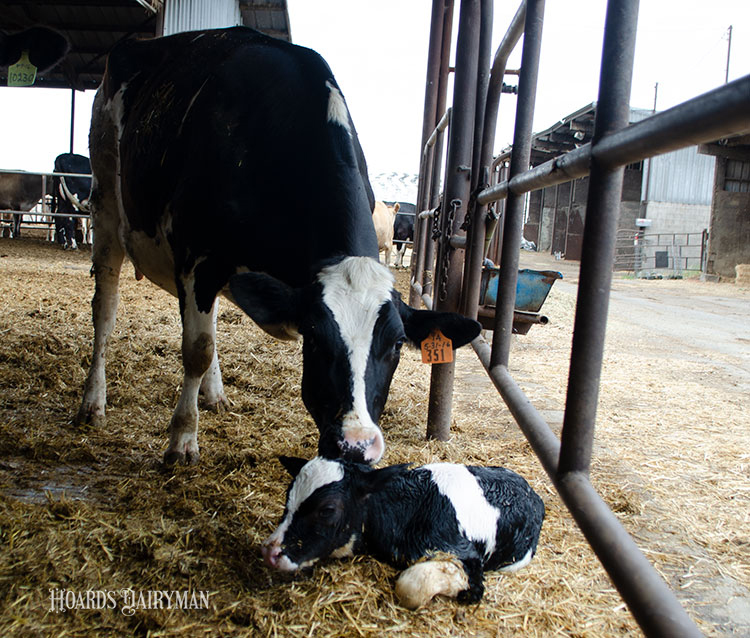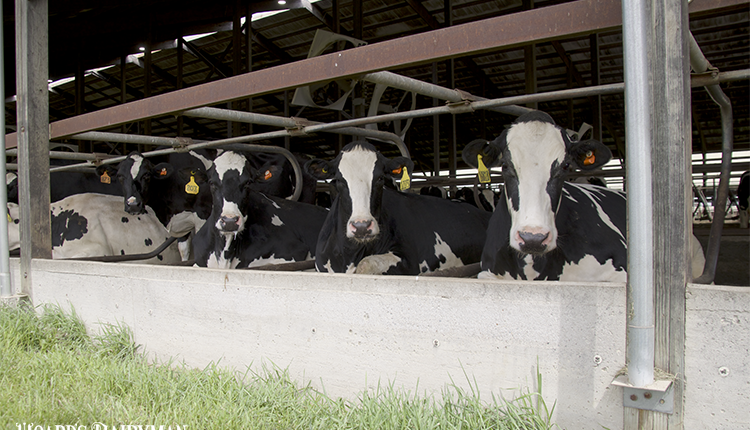
Genetic evaluations for calving ease will appear significantly different on August 11, the Council for Dairy Cattle Breeding (CDCB) and partner organizations have announced.
Calving traits — previously problematic for many U.S. dairy farms — have been successfully improved through better genetics and management, as demonstrated in Figure 1. This has resulted in less dystocia, fewer stillbirths, healthier cows and calves, and higher producer return on investment from better genetics.

As calving difficulty has diminished, dairy producers were surprised to see higher genetic evaluations for calving ease for some familiar bulls. The April 2020 genetic base change sparked an industry dialogue about the best way to express the predicted transmitting abilities (PTAs) for calving ease and stillbirth. While the genetic base for all traits is updated every five years, the phenotypic base has been kept constant due to an industry strategy for genetic focus. While the bull rankings in April were correct, there was a mismatch between the calving trait PTAs and the actual rate of dystocia and stillbirth on most farms.
CDCB and industry partners have adjusted the phenotypic base to match the observed, on-farm incidence rates, effective in the August evaluations. As a result, sire calving ease (SCE) and daughter calving ease (DCE) evaluations will appear significantly different. Holstein sire PTAs will average 2.2% SCE and 2.7% DCE, and Brown Swiss will average 3% SCE and 2.8% DCE.
The variation in the data, and the range of calving traits for both Holstein and Brown Swiss, will decrease as well. (Calving ease is not reported for other breeds.) Figure 2 shows the distribution of traditional PTAs (without genomics) for sire calving ease in Holsteins for April and August. In August, most Holstein bulls will range from 1% to 4% SCE, while in April most Holstein bulls fell between 4% and 12% SCE. There will be fewer bulls with extreme PTAs, reflecting the widespread progress made across the population.

The reliabilities of the evaluations will remain the same; the number of available daughter and granddaughter records does not change.
Stillbirth has been expressed as the percentage of stillbirths to both heifers and cows — different from the calving ease PTAs based only on first-calf heifers. CDCB is changing stillbirth from all births to only first-calf heifers for consistent interpretation. Average PTAs for sire stillbirth (SSB) and daughter stillbirth (DSB) will also decrease in August, although to a lesser extent than calving ease.
Due to the calving trait changes, there will be slight adjustments in Net Merit and other merit indices. In Net Merit $ and the other merit indices, the four calving traits (SCE, DCE, SSB, and DSB) are included through a calving ability index (CA$). CA$ relative weight in NM$ formula will change from the previous 4.8% to 3.8% in August 2020. Consequently, the relative weighing of several other traits will be slightly adjusted, and these adjustments can be expected to cause some slight re-ranking of bulls and cows.
Takeaways
- Calving traits that previously were problematic for many U.S. dairy farmers have been successfully improved through better genetics and management.
- In August, PTAs for Holstein sires will average 2.2% for SCE and 2.7% for DCE.
- The range of all calving traits will significantly decrease. In August, most Holstein bulls will range from 1% to 4% SCE. In the April evaluations, most Holstein bulls fell between 4% and 12% SCE.
- Selection thresholds such as “no bull over 8% calving ease” are no longer necessary.
- The stillbirth traits will now be expressed as percent stillbirths to heifers, similar to calving ease.
- Some re-ranking of animals for Net Merit $ can be expected due to the scale change in CA$ and the reduction in standard deviation of calving traits.
The bottom line
Selection thresholds such as “no bull over 8 SCE” are no longer necessary. Producers that have used a hard cutoff for calving traits, along with a selection index like Net Merit or total performance index (TPI), can stop using that calving threshold to exclude undesirable bulls. The selection index will ensure that the calving traits are given proper emphasis when ranking bulls.
For more detail, refer to various articles and a webinar by CDCB and USDA AGIL:
- Calving Ease Improvements: August 2020
- What Is Going on with Calving Ease?
- August 2020 Calving Traits Will Reflect Lower Breed Averages
- CDCB Changes to Evaluation System (August 2020)








